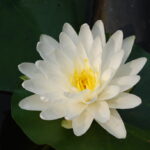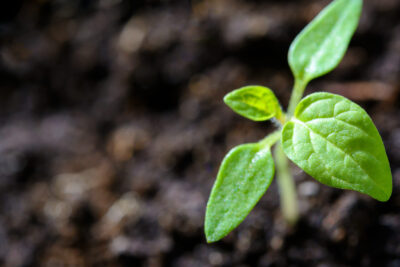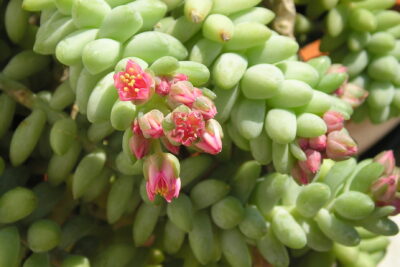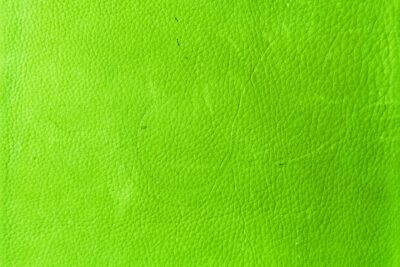
Discover the Perfect Sedum Variety for a Vibrant Blue Succulent

Sedums are a popular choice for succulent enthusiasts due to their wide variety of colors, shapes, and sizes. One particular sedum variety that stands out is the vibrant blue sedum. With its striking blue foliage, this sedum adds a unique and eye-catching element to any garden or indoor collection.
We will explore the different types of blue sedums available and their characteristics. We will delve into the care requirements for these sedums, including sunlight, watering, and soil preferences. Additionally, we will provide some tips on how to propagate and maintain these succulents to ensure their long-term health and vibrancy. Whether you are a seasoned succulent lover or a beginner looking to add some color to your collection, this article will guide you in finding the perfect blue sedum variety for your gardening needs.
- Research different varieties of Sedum to find the perfect one for a vibrant blue succulent
- Look for Sedum varieties that are known for their blue coloration
- Consider factors such as climate, sunlight, and soil conditions when choosing a Sedum variety
- Visit local nurseries or garden centers to see if they have any Sedum varieties with blue hues available
- Ask experienced gardeners or succulent enthusiasts for recommendations on blue Sedum varieties
- Read online reviews and forums to learn about the experiences of other gardeners with blue Sedum varieties
- Experiment with different Sedum varieties and observe their growth and coloration over time
- Take proper care of the chosen Sedum variety to ensure it maintains its vibrant blue color
- Frequently Asked Questions
Research different varieties of Sedum to find the perfect one for a vibrant blue succulent
If you are looking to add a pop of vibrant blue to your succulent garden, exploring different varieties of Sedum is the perfect place to start. Sedum, also known as stonecrop, is a diverse and beautiful genus of succulent plants that come in a wide range of colors, shapes, and sizes.
When it comes to finding the perfect Sedum variety for a vibrant blue succulent, you have several options to consider. Here are some top choices to help guide your selection:
1. Sedum reflexum 'Blue Spruce'
This stunning Sedum variety features needle-like foliage that closely resembles the branches of a blue spruce tree. Its blue-green leaves create a striking contrast against other succulents and can add a touch of elegance to any garden. 'Blue Spruce' is a low-growing Sedum that forms tight mounds, making it an excellent choice for ground cover or container planting.
2. Sedum rupestre 'Blue Mound'
The 'Blue Mound' Sedum is a compact and versatile variety that boasts beautiful blue-gray foliage. Its dense clusters of small, round leaves give it a unique appearance, and the blue hue intensifies under direct sunlight. This Sedum variety is perfect for rock gardens, borders, or as a low-maintenance ground cover.
3. Sedum dasyphyllum 'Major'
If you prefer a more delicate and trailing succulent, the 'Major' Sedum dasyphyllum is an excellent choice. This variety features tiny, powdery blue leaves that form dense mats or cascading clusters. 'Major' is a perfect addition to hanging baskets, vertical gardens, or as a ground cover in between stepping stones.
 Discover the tallest succulent tree species for your garden
Discover the tallest succulent tree species for your garden4. Sedum cauticola 'Lidakense'
The 'Lidakense' Sedum cauticola is a fantastic option for those seeking a vibrant blue succulent with a touch of purple. This low-growing Sedum variety displays eye-catching blue-gray leaves that turn purple during the cooler months. 'Lidakense' is an ideal choice for rock gardens, borders, or as a colorful addition to containers.
When selecting the perfect Sedum variety for a vibrant blue succulent, it is important to consider your specific growing conditions and preferences. Remember to provide adequate sunlight, well-draining soil, and occasional watering to ensure your Sedum thrives and maintains its vibrant blue color.
With these stunning Sedum varieties, you can easily create a captivating succulent garden that showcases the beauty of vibrant blue foliage. Explore the different options available and select the Sedum variety that best suits your style and gardening needs.
Look for Sedum varieties that are known for their blue coloration
If you're looking to add a vibrant touch of blue to your succulent collection, then you'll want to explore Sedum varieties that are known for their stunning blue coloration. These sedums are not only beautiful but also provide a unique and eye-catching element to any garden or indoor space.
Here are some Sedum varieties that are renowned for their vibrant blue hues:
1. Sedum reflexum 'Blue Spruce'
This Sedum variety, commonly known as 'Blue Spruce', features needle-like blue-green foliage that resembles the branches of a spruce tree. Its compact and mounding habit makes it an excellent choice for rock gardens or container arrangements. 'Blue Spruce' is a drought-tolerant plant that thrives in full sun and well-draining soil.
2. Sedum cauticola 'Lidakense'
'Lidakense' is a low-growing Sedum variety with powdery blue foliage that intensifies in color during cooler temperatures. It produces clusters of pink flowers in late summer, adding an extra pop of color to its already stunning appearance. This Sedum variety is perfect for ground cover or as a border plant in sunny locations.
 Discover the Top Orange Succulent Plants to Enhance Your Home
Discover the Top Orange Succulent Plants to Enhance Your Home3. Sedum dasyphyllum 'Major'
Also known as 'Blue Tears' or 'Corsican Stonecrop', this Sedum variety forms a dense mat of powdery blue-green leaves. Its small, rounded leaves give it a delicate and charming appearance. 'Major' is an excellent choice for rock gardens, crevices, or as a trailing plant in containers. It prefers full sun and well-draining soil.
Remember, when selecting a blue Sedum variety, be sure to provide them with the proper growing conditions, including adequate sunlight and well-draining soil. These stunning succulents will not only add a burst of color to your collection but also thrive with minimal care.
Consider factors such as climate, sunlight, and soil conditions when choosing a Sedum variety
When it comes to selecting the perfect Sedum variety for your garden, it's essential to consider several factors such as climate, sunlight, and soil conditions. These factors play a crucial role in determining the success and vibrancy of your blue succulent.
Climate
Sedums are known for their ability to thrive in various climates, but some varieties are more suited to specific conditions. If you live in a hot and dry climate, opt for Sedums that are drought-tolerant and can withstand intense heat. On the other hand, if you reside in a cooler region, choose Sedums that can tolerate frost and lower temperatures.
Sunlight
Most Sedums prefer full sun, meaning they require at least six hours of direct sunlight per day. However, some varieties can tolerate partial shade. Consider the amount of sunlight your garden receives throughout the day and choose a Sedum variety accordingly. Remember, the more sunlight your Sedum gets, the more intense its blue coloration will be.
Soil Conditions
Sedums are known for their ability to thrive in poor soil conditions, but they still require well-draining soil. Make sure the soil in your garden is loose and well-drained to prevent waterlogging, which can lead to root rot. If your soil is heavy or clayey, consider adding organic matter or sand to improve drainage.
Popular Sedum Varieties for Vibrant Blue Succulents
Now that you understand the importance of climate, sunlight, and soil conditions, let's explore some popular Sedum varieties that can give you vibrant blue succulents:
 Can Succulents Display Both Red and Purple Colors Simultaneously?
Can Succulents Display Both Red and Purple Colors Simultaneously?- Sedum reflexum 'Blue Spruce': This variety features small, needle-like blue-green leaves that resemble the foliage of a spruce tree. It forms a dense mat of succulent foliage and produces yellow flowers in the summer.
- Sedum dasyphyllum: Also known as the "Blue Tears" Sedum, this variety has tiny, round, blue-green leaves that form a cascading mound. It is perfect for rock gardens, hanging baskets, or as ground cover.
- Sedum cauticola 'Lidakense': With its gray-blue leaves and pinkish-purple flowers, this Sedum variety adds a touch of elegance to any garden. It is a low-growing and spreading plant that works well in borders or container plantings.
Remember to check the specific requirements of each Sedum variety before making your final decision. By considering factors such as climate, sunlight, and soil conditions, you can ensure that the Sedum variety you choose will thrive and provide you with a vibrant blue succulent display in your garden.
Visit local nurseries or garden centers to see if they have any Sedum varieties with blue hues available
When it comes to adding a pop of vibrant blue to your succulent collection, Sedum varieties are a fantastic choice. These stunning plants not only offer unique foliage colors but are also easy to care for, making them perfect for both beginner and experienced gardeners.
If you're on the lookout for Sedum varieties with beautiful blue hues, a great place to start is by visiting your local nurseries or garden centers. These establishments often have a wide selection of succulents, including Sedums, from which you can choose.
When you arrive at the nursery or garden center, take your time to explore the different sections dedicated to succulents. Look for labels or ask the staff for assistance in locating Sedum varieties that feature blue foliage. They may have specific cultivars or hybrids that exhibit stunning shades of blue, ranging from pale blue-grey to deep turquoise.
Tip: Don't be afraid to ask the staff for recommendations or information about specific Sedum varieties with blue hues. They are knowledgeable and can provide valuable insights into the plants' care requirements and growth habits.
Consider these popular Sedum varieties with blue foliage:
- Sedum reflexum 'Blue Spruce': This Sedum variety features needle-like leaves that resemble the spruce tree. Its bluish-green foliage creates a mesmerizing effect in any garden or container.
- Sedum cauticola 'Lidakense': With its striking blue-grey leaves, this Sedum variety adds a touch of elegance to any succulent arrangement. It produces clusters of pink flowers in late summer, further enhancing its appeal.
- Sedum rupestre 'Blue Mound': This Sedum variety forms compact mounds of powdery blue leaves. Its small size makes it a versatile choice for rock gardens, borders, or even as ground cover.
- Sedum 'Blue Elf': Known for its intense blue foliage, this Sedum variety forms low, spreading mats that create a beautiful contrast against other succulents or flowers.
These are just a few examples of Sedum varieties that boast stunning blue foliage. However, keep in mind that availability may vary depending on your location and the season. If you're unable to find these specific varieties, don't get discouraged. Nurseries often rotate their stock, so it's worth checking back periodically or inquiring about upcoming shipments.
By visiting local nurseries or garden centers, you not only get the opportunity to see the Sedum varieties firsthand but also support local businesses. So, don't hesitate to go on a succulent-hunting adventure and discover the perfect Sedum variety with vibrant blue foliage to enhance your plant collection!
 Discover the Largest and Most Stunning Big Leaf Succulents
Discover the Largest and Most Stunning Big Leaf SucculentsAsk experienced gardeners or succulent enthusiasts for recommendations on blue Sedum varieties
When it comes to adding a pop of vibrant blue to your succulent collection, Sedum varieties are an excellent choice. With their stunning hues and unique textures, blue Sedums can effortlessly elevate the visual appeal of any garden or indoor space. To help you find the perfect blue Sedum variety for your needs, we recommend reaching out to experienced gardeners or succulent enthusiasts for their recommendations.
These individuals have spent years cultivating and caring for various Sedum varieties and can provide valuable insights on which blue Sedums thrive in different climates and growing conditions. Whether you're a beginner or an experienced gardener, their knowledge and expertise can guide you towards the ideal blue Sedum that suits your preferences and requirements.
When seeking recommendations, consider joining online gardening forums or social media groups dedicated to succulents. These platforms are filled with passionate individuals who are eager to share their experiences and offer recommendations on blue Sedum varieties.
Factors to consider when choosing a blue Sedum variety:
- Climate: Different Sedum varieties have varying temperature and light requirements. Consider the climate in your area and choose a blue Sedum that thrives in those conditions.
- Growing Space: Assess the available growing space you have, whether it's a garden bed, a pot, or a hanging container. Select a blue Sedum that fits well within your space constraints.
- Maintenance: Take into account the level of care and attention you can provide to your blue Sedum. Some varieties require more maintenance than others, so choose one that aligns with your gardening style.
- Texture and Form: Blue Sedums come in various textures and forms, from low-growing groundcovers to upright and spiky varieties. Decide on the desired visual impact you want to achieve and select a blue Sedum that complements your overall garden aesthetic.
By considering these factors and seeking advice from experienced gardeners or succulent enthusiasts, you'll be well on your way to finding the perfect blue Sedum variety to enhance your collection. Remember to experiment, have fun, and enjoy the process of discovering the beauty of these vibrant blue succulents.
Read online reviews and forums to learn about the experiences of other gardeners with blue Sedum varieties
When it comes to finding the perfect blue Sedum variety for your garden, it's always helpful to learn from the experiences of other gardeners. Online reviews and forums can provide valuable insights and recommendations that can guide you in making the right choice.
Reading online reviews allows you to see what other gardeners have to say about specific blue Sedum varieties. They can provide information on the plant's growth habits, color intensity, and overall performance in different climates. Pay attention to reviews that mention the plant's ability to maintain its vibrant blue color throughout the growing season.
 In Search of Rare Red Velvet Succulents: A Collector's Dream
In Search of Rare Red Velvet Succulents: A Collector's DreamForums, on the other hand, offer a platform for gardeners to share their personal experiences and ask questions. Participating in these discussions can give you a chance to interact with experienced gardeners who have successfully grown blue Sedum varieties. You can ask for recommendations, tips, and tricks to ensure the best results in your garden.
When browsing through online reviews and forums, it's important to look for reliable sources. Consider reading reviews from reputable gardening websites or forums with active and knowledgeable members. This way, you can trust the information you gather and make informed decisions based on the experiences of others.
Remember, everyone's gardening experience can be different, so it's essential to consider a range of opinions before making a decision. By utilizing online reviews and forums, you can tap into the collective wisdom of the gardening community and discover the perfect blue Sedum variety to add vibrancy to your garden.
Experiment with different Sedum varieties and observe their growth and coloration over time
Sedums, commonly known as stonecrops, are a diverse group of succulent plants that come in a wide array of shapes, sizes, and colors. One particularly captivating variety is the vibrant blue sedum, which adds a unique touch to any garden or succulent collection.
When it comes to selecting the perfect sedum variety, there are several options available to choose from. Each variety has its own distinct characteristics, making the process of experimentation an exciting journey for succulent enthusiasts.
 Echeveria 'White Lotus': A Spiky Succulent with Delicate White Dots
Echeveria 'White Lotus': A Spiky Succulent with Delicate White DotsHere are a few sedum varieties to consider:
- Sedum reflexum 'Blue Spruce': This sedum variety features small, needle-like leaves that resemble the foliage of a blue spruce tree. Its stunning blue-green coloration adds a cool and refreshing element to any garden or rockery.
- Sedum cauticola 'Lidakense': With its silver-blue foliage and delicate pink flowers, this sedum variety is a true showstopper. It forms low mounds of foliage and thrives in well-draining soil and full sun.
- Sedum dasyphyllum 'Major': This sedum variety is commonly referred to as "Corsican stonecrop" and features tiny, powdery blue leaves that form dense mats. Its low-growing habit makes it an excellent choice for ground cover or rock gardens.
- Sedum pachyphyllum: Also known as "Jelly Bean Sedum," this variety boasts chubby, jelly bean-shaped leaves that range in color from pale blue-green to bright blue. Its unique appearance and ability to tolerate drought make it a popular choice among succulent enthusiasts.
By experimenting with different sedum varieties, you can observe how they grow and develop over time. Pay attention to factors such as sunlight, watering frequency, and soil type, as these can greatly impact the coloration and overall health of your sedums.
Remember to give your sedums adequate space to grow and thrive, as overcrowding can lead to poor air circulation and increased susceptibility to pests and diseases. Additionally, regular pruning can help maintain the desired shape and prevent legginess.
Whether you choose to showcase a single sedum variety or create a vibrant blue succulent garden using a combination of these varieties, the possibilities are endless. Discovering the perfect sedum variety for your space is an exciting adventure that will bring beauty and joy to your garden.
Take proper care of the chosen Sedum variety to ensure it maintains its vibrant blue color
When it comes to succulents, the Sedum family offers a wide range of varieties to choose from. One of the most captivating options is the vibrant blue succulent. Its unique coloration adds a pop of eye-catching beauty to any garden or indoor space. However, to ensure that this sedum variety maintains its stunning blue hue, proper care is essential.
 Exploring Tall Succulents: Natural Varieties and Growth Habits
Exploring Tall Succulents: Natural Varieties and Growth Habits1. Provide ample sunlight
Like other succulents, the vibrant blue sedum thrives in bright sunlight. Ensure that it receives at least six hours of direct sunlight each day. Place it near a south-facing window or in a spot with ample natural light to promote optimal growth and color retention.
2. Water sparingly
Sedums are known for their drought-tolerant nature, and the vibrant blue variety is no exception. Overwatering can lead to root rot and discoloration of the leaves. Allow the soil to dry out completely between waterings, and only water when the top inch of soil feels dry to the touch. Remember, it's better to underwater than to overwater.
3. Use well-draining soil
Good drainage is crucial for succulents, including the vibrant blue sedum. Use a well-draining soil mix specifically formulated for succulents or amend regular potting soil with sand or perlite to improve drainage. This will prevent water from sitting around the roots, which can cause the leaves to turn yellow or brown.
4. Apply fertilizer sparingly
While sedums don't require frequent fertilization, a small amount of balanced succulent fertilizer can help maintain their vibrant color. Apply a diluted fertilizer once every two to three months during the growing season. Avoid using excessive amounts of fertilizer, as this can lead to leggy growth and a loss of the plant's natural blue hue.
5. Protect from extreme temperatures
Vibrant blue sedums are generally hardy and can tolerate a range of temperatures. However, they may become stressed and lose their color if exposed to extreme heat or cold for prolonged periods. Protect the plants from frost and provide shade during scorching summer days to prevent any damage to their vibrant blue leaves.
By following these care tips, you can ensure that your chosen variety of vibrant blue sedum remains a stunning centerpiece in your garden or indoor succulent collection. With proper care, this unique succulent will continue to captivate with its vibrant blue coloration.
Frequently Asked Questions
1. What is a Sedum?
 The Truth about Growing a Green Rose Succulent at Home
The Truth about Growing a Green Rose Succulent at HomeSedum is a genus of flowering plants that belong to the Crassulaceae family. They are commonly known as stonecrop and are known for their fleshy leaves and vibrant colors.
2. Can Sedums survive in hot climates?
Yes, Sedums are well-adapted to hot climates and can thrive in full sun. They have the ability to store water in their leaves, making them drought-tolerant and perfect for arid environments.
3. Are there Sedum varieties with blue foliage?
Yes, there are Sedum varieties that have blue foliage. One popular example is Sedum reflexum 'Blue Spruce', which has bluish-green needle-like leaves that resemble spruce needles.
4. How do I care for a Sedum with blue foliage?
Sedums with blue foliage prefer well-draining soil and should be watered sparingly. They thrive in full sun but can tolerate partial shade. It's important to avoid overwatering as it can lead to root rot.
 Vibrant & Colorful Succulent Plants for Your Garden
Vibrant & Colorful Succulent Plants for Your GardenIf you want to read more articles similar to Discover the Perfect Sedum Variety for a Vibrant Blue Succulent, you can visit the Varieties and Colors category.






You Must Read